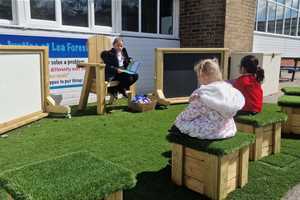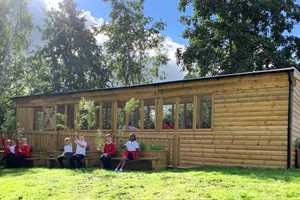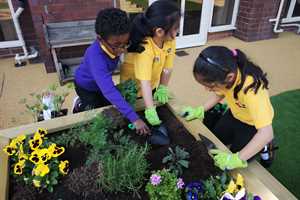
Outdoor Learning and Play
Using the Outdoor Environment to Learn about Plants and Animals
Allowing children, from a young age, to explore their natural surroundings will help them to develop an understanding of the world. Giving children daily access to an outdoor environment helps to develop a sense of excitement and curiosity about natural phenomena.
Taking lessons outside can maximise pupil engagement and provide learners with motivation to succeed.
In my experience, being outdoors encourages children to be curious and to ask questions about things they notice. Pupils gain first-hand, practical experiences through observation and exploration.
This blog provides a range of practical ideas and suggested activities for learning about plants and animals using the outdoor environment.
Plants
Having a range of outdoor planters allows pupils to explore plant growth throughout the year. Pentagon’s Sleeper Planters are the perfect height for young children to grown their own flowers and vegetables.
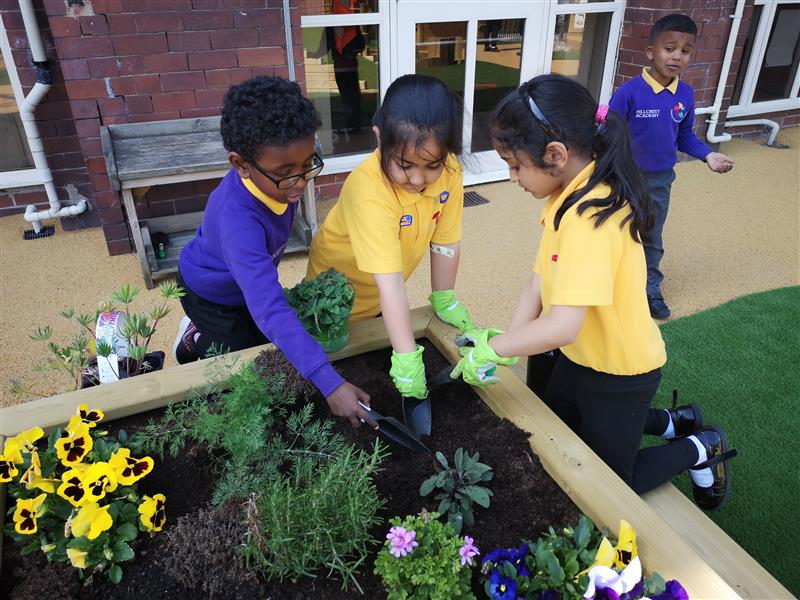
A range of different vegetables can be grown which pupils can harvest and sort, taking note of different colours. Vegetables can be used to create a salad, ingredient lists can be composed and plants labelled, providing a real purpose for learning.
Pupils will begin to notice that not all plants are the same and they will identify plant characteristics such as root, stem, leaf, petal, flower.

Invest in some Planters
Growing plants seems to provide children with a little bit of ‘magic.’ Watching a muddy bed coming to life can provide a great spot for observation and experimentation.
Pupils can observe and compare a range of plants during the course of a school year. This can include: flowers, trees, bushes, vegetable beds, weeds, twigs, evergreen and deciduous plants, buds, blossom and seeds. All year groups in a school can take responsibility for growing and harvesting a particular crop.
Children love healthy competition, perhaps there could be a school ‘Best in Show’ competition where children present and talk about their prized crop or flowers!
During the autumn term pupils can explore pumpkins, making predictions and drawing what they think the inside of a pumpkin will look like.
Children will have great fun looking at where the seeds are and noting how they are attached. Observing a pumpkin may generate discussion about the difference between fruits and vegetables and pupils can observe a carved pumpkin after it has been outside for a few days and talk about the changes.
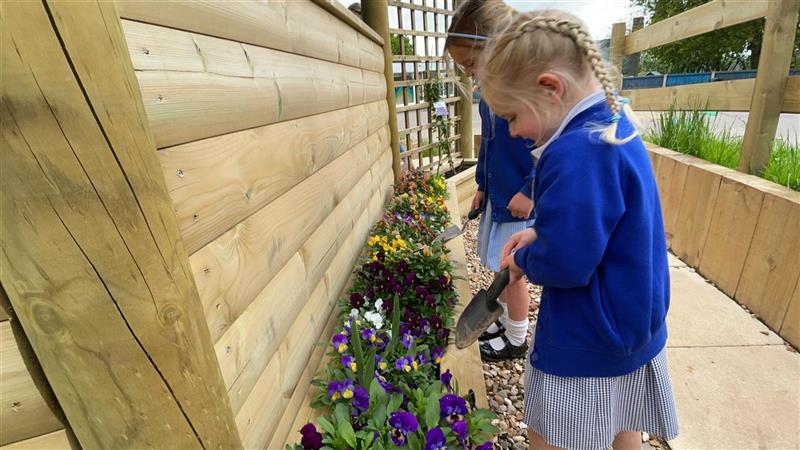
Nature Journals
Keeping a nature journal allows pupils to record their findings during different seasons. Photographs can be taken from the same viewpoint at different times throughout the year and children can write about the changes.
Photographs that children take of different plants and flowers could be made into matching games such as dominoes which will help with identification and naming.
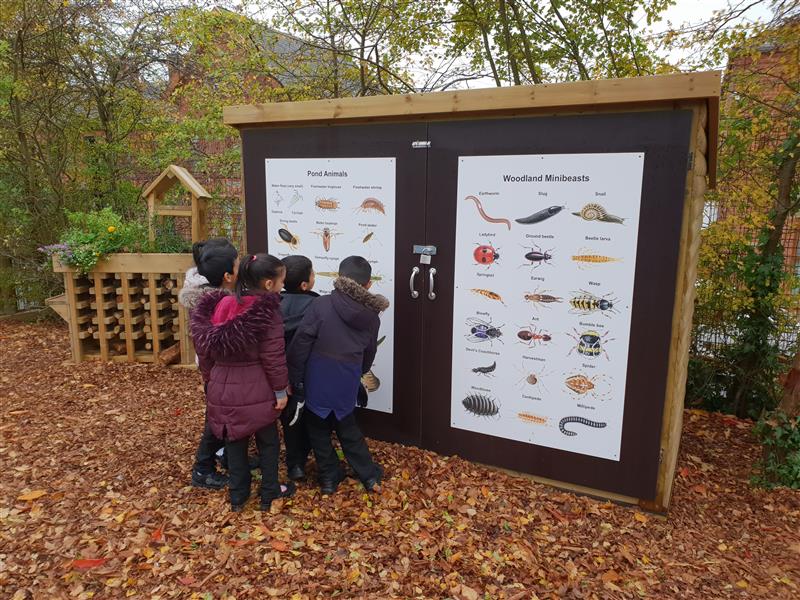
A journal would allow pupils to make observational drawings and they could possibly add plant cuttings or pressed flowers to their recordings. When spring is approaching, pupils can record when they see the first leaf open on a tree and the first tree they see to flower/blossom.
Young children can be asked the question, ‘Is a tree a plant?’ It will be useful if children can visit a particular tree in the school grounds or local area to observe changes to the tree over time.
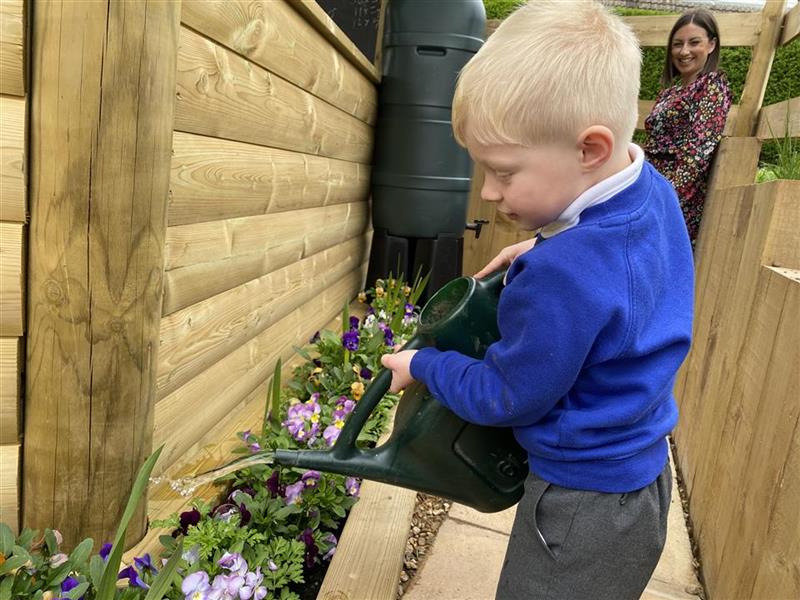
Plant Growth
Pupils will want to discover how plants grow and what might affect them. Children could set up an experiment, observing and measuring the growth of spring onions. Measurements can be taken each day and a thermometer can be used to take the daily outdoor temperature.
Pupils can calculate how much their spring onion grew in length over a two-week period and see if there is a pattern between onion growth and daily temperature.
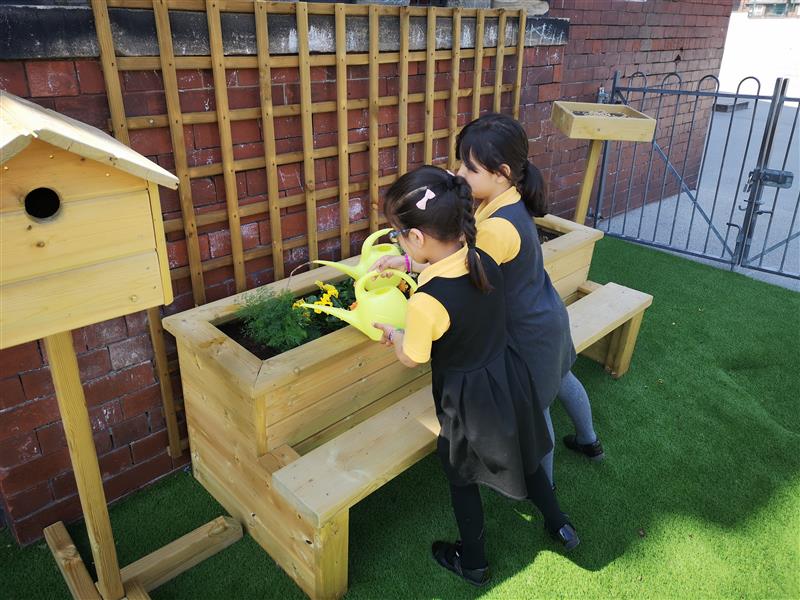 Young children will enjoy growing grass in egg shell heads, observing how long it takes for the grass to grow when placed in different conditions. Some children may decide to cut the grass compared to others who may see how long it will grow.
Young children will enjoy growing grass in egg shell heads, observing how long it takes for the grass to grow when placed in different conditions. Some children may decide to cut the grass compared to others who may see how long it will grow.
In order to investigate the way in which water is transported within plants children can conduct an experiment with white carnations or lilies. Single stems can be trimmed and placed into water with different coloured food colouring added to it.
Pupils will find that the flower changes colour showing how water and nutrients travel up the stem. Having an outdoor canopy next to the classroom, would be a great location for conducting experiments that can be observed daily.
Each child in a class could be given a small packet of seeds such as rosemary, mint or basil without growing instructions. Pupils must decide how and where to plant their seeds and make decisions regarding the amount of sunlight and water.
Plenty of Space for Outdoor Games
Accessing an outdoor space enables children to play various games which can embed understanding. Playing a game together as a class can help to explain pollination.
‘Bees’ can be made using cotton balls and pipe cleaners. Plenty of flower shapes need to be cut from paper with a milk bottle lid stuck to the centre. A small amount of either cocoa powder or flour can be placed inside the bottle top of each flower to represent pollen.
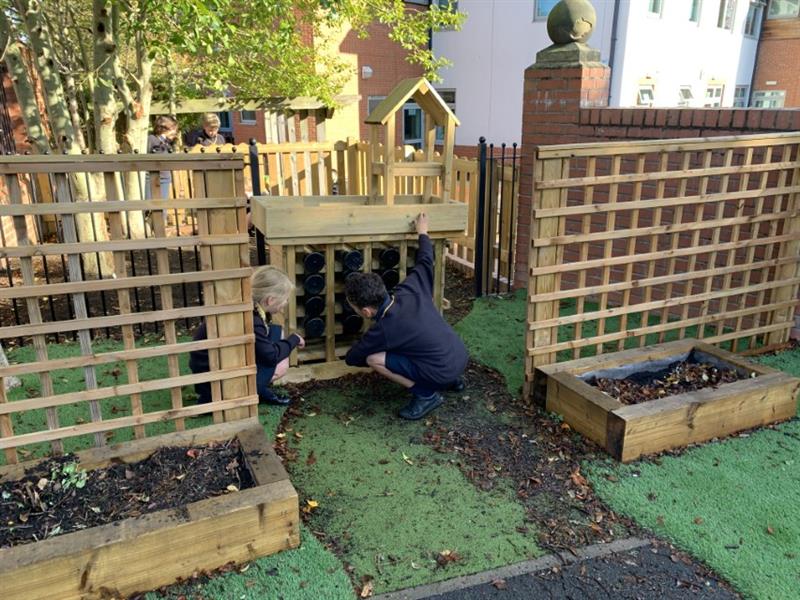
Players choose a designated space to represent a ‘nest’ and start the game from this position. Each player holds a bee and dips it into each flower as they buzz past.
As children move from flower to flower, the ‘pollen’ colours mix, showing how pollen is transferred between plants. Different instructions can be called out such as ‘Night Time!’ where all bees must fly back to the nest, ‘Beware of the Bird!’ requires children to freeze for 10 seconds to avoid being eaten, ‘Crab Spider!’ indicates that a spider has been hiding inside the flower and eats all the bees which ends the game!
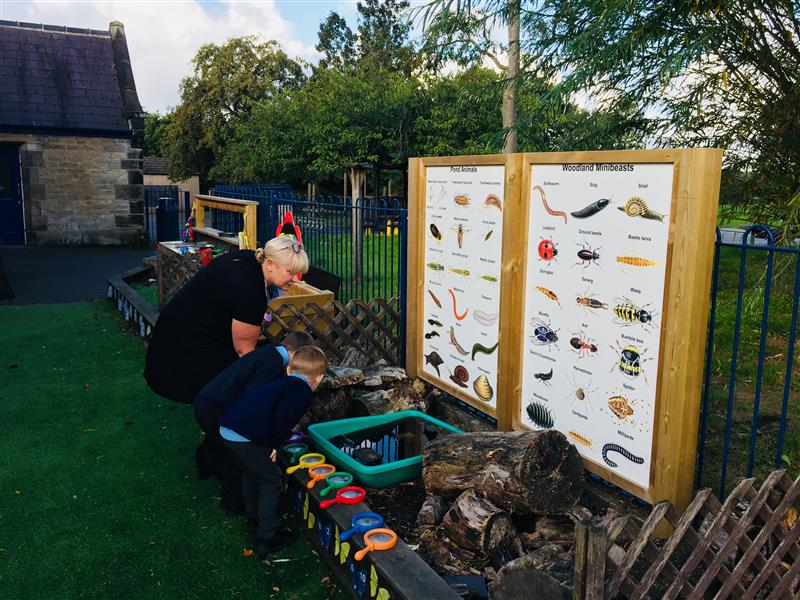
Animals
Pupils should make use of their school grounds and local environment throughout the year to explore and answer questions about animals in their habitat. They will begin to understand how to care for animals taken from their local environment and will return them safely after study.
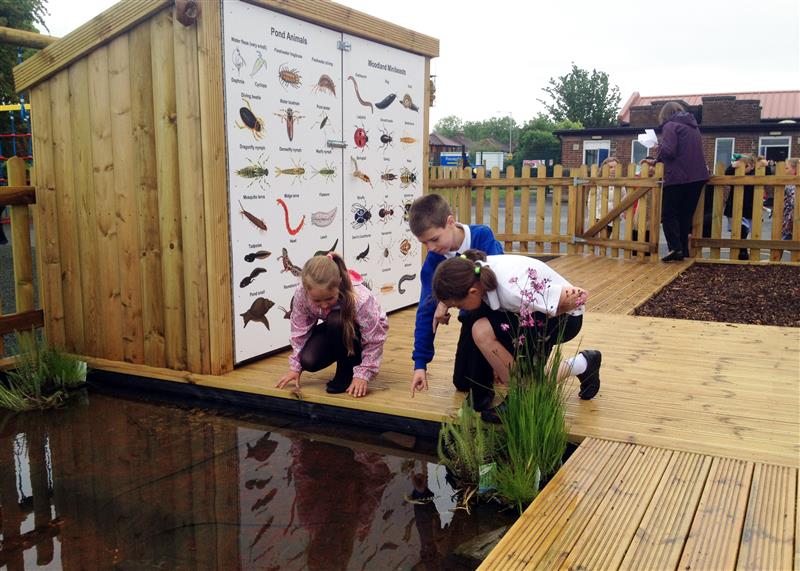
Pentagon’s Wildlife Area allows pupils to directly observe and become familiar with fish, insects and birds. Animal growth and development can be observed over time as children are given opportunities to watch butterflies emerging and tadpoles transforming into frogs.
A Bug Hotel allows children to discover a variety of different insects. Classes could create a ‘Bug of the Month’ display allowing opportunities for observational drawing and photography. Pupils can talk about where their bug was found and the conditions of the habitat. Children could begin to design tables for collecting information about ‘how many?’ ‘size and length’ and ‘where?’ different creatures have been found.
A school pond allows plenty of opportunities for hands-on learning where children can identify common pond organisms, observe lifecycles and develop an understanding of how an ecosystem works. Pond dipping involves full body movements which helps to build strength, balance and coordination.
A Relaxing Space for Reading and Research
An Outdoor Learning Den is the perfect relaxing spot for children to read and conduct research. Through reading a variety of different texts or watching videos pupils can learn about animal life cycles and how to care for pets.
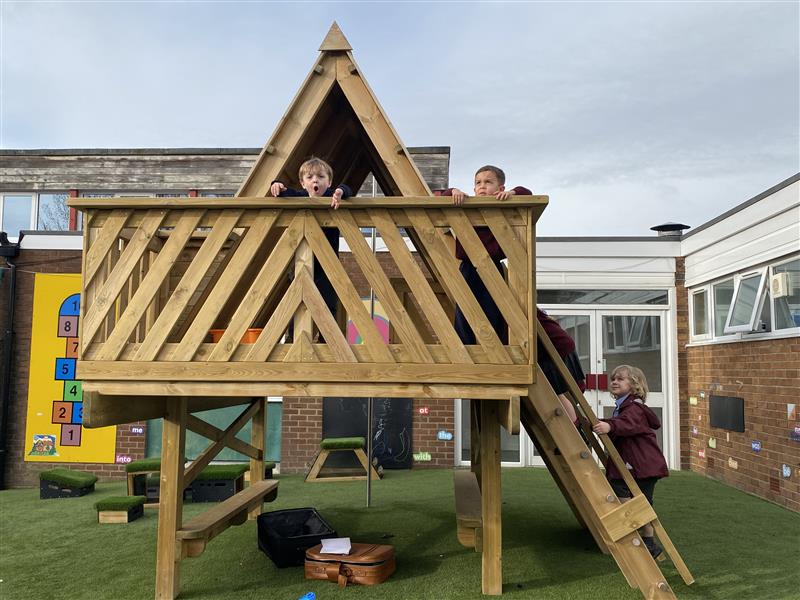
Pupils could consider similarities/differences between pets and wild animals. Children could look for signs of wild animals in their local habitat and create advice sheets for looking after both wild and tame species.
A Giant Whiteboard can be used to make a list of questions that pupils would like to ask a visitor such as a vet or a zoo keeper. Practitioners can write various statements on a giant whiteboard such as:
- All animals have 4 legs
- Penguins can fly
- All animals can swim
- All animals eat grass
- Animals need legs to fly
Pupils can discuss these statements and after research they will decide if the statement is true/false/maybe so.
Explore and Invent in the Outdoor Classroom
Having an Outdoor Classroom space gives children freedom to work with large resources. Pupils could design and invent their own animal using different sized cardboard boxes, recycled and craft materials.
Children will enjoy naming their animal and making decisions about physical features such as number of legs, tail, size and type of body covering. Pupils will practise speaking and listening skills when they present their animal, making decisions about where it would live, typical daily diet and how it keeps safe from predators.
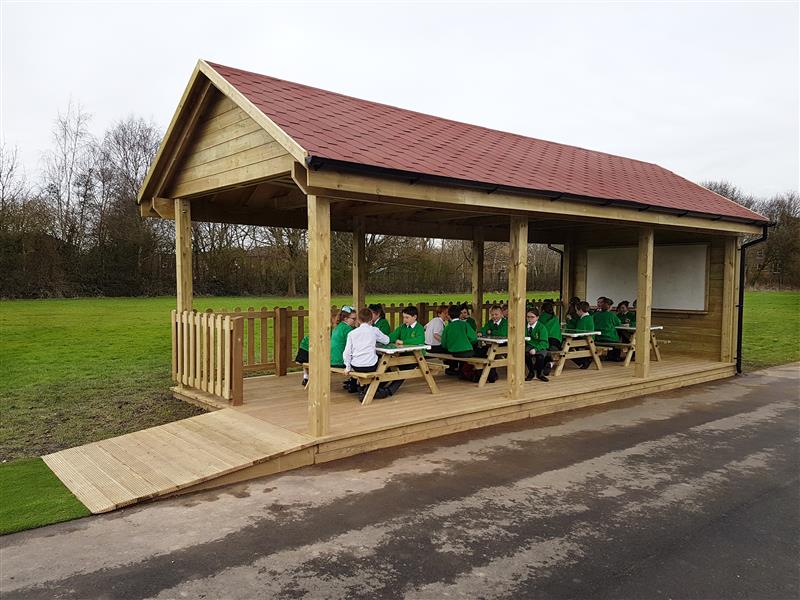
Pupils are often fascinated when learning about how animals protect themselves using colour and pattern. An outdoor classroom would be the perfect place to design a t-shirt that could be used for camouflage in an outdoor game of hide and seek!
Pupils can work together to give their own presentations about a habitat in their school or surrounding area. They can talk about the living things and species found there, explain examples of food chains that occur and give ideas for how to protect and care for the area.
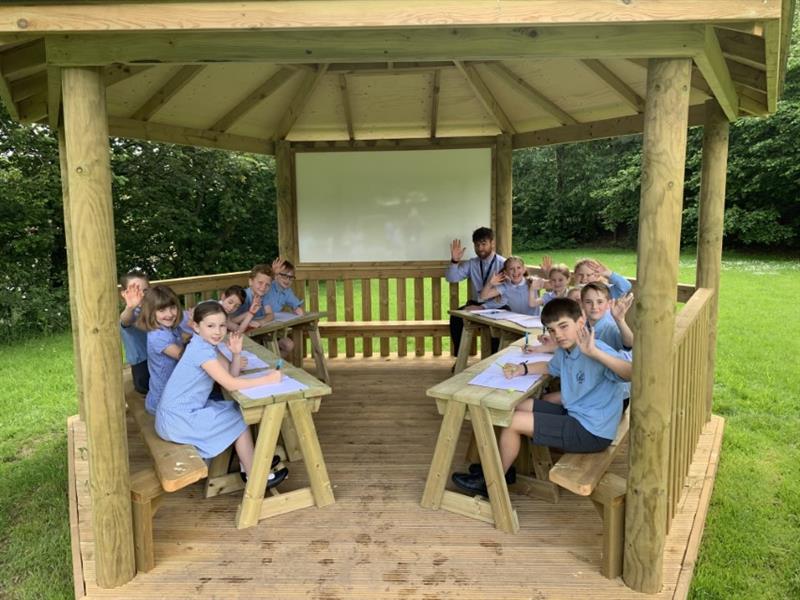
Outdoor Role Play Areas
A Lookout Cabin can be easily transformed into a ‘Bird Visitor Centre.’ The elevated cabin makes a fantastic bird viewing area. Information and pictures of different birds could be taped to the walls inside and binoculars and cameras should be readily available to catch any rare sightings!
A variety of different natural resources such as grasses, twigs, straw, flowers and moss can be provided for children to practise nest building. Acorns and stones can represent bird eggs and children can be involved in decision making when selecting a safe place for their nest and making sure that the birds will be warm and comfortable.
Pupils could find out what birds like to eat by placing different options around the school grounds and observing over time. They could design their own bird platform or hanging feeder, selecting their own container and wire whilst considering hanging position and weather conditions
Space for Sorting and Pattern Seeking
A Sorting or Tuff Spot Table is a really useful space where groups of pupils can sort and classify pictures/photographs that they have taken of creatures in the school grounds or local area. Practitioners can talk to children about how they have decided to sort the animals and the names given to each group. Scientific terms such as vertebrates/invertebrates can be introduced.
A variety of different coloured caterpillars (different coloured string) could be placed in different locations around the school grounds. Pupils can be challenged to find them all and stick them on a board at two-minute intervals. Pupils would be able to look for patterns in results, learning about camouflage and adaptation by creating their own simple bar charts.
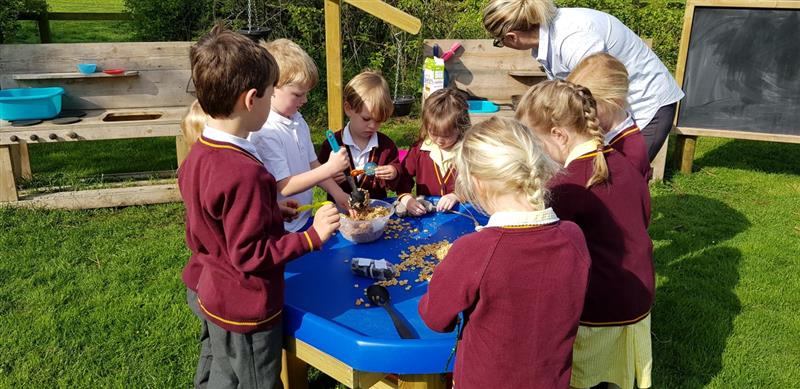
Allowing children to discover and explore their outdoor environment can lead to natural links between subjects and spontaneous child-led investigation. Even a ten-minute break in the middle of the day to observe, take a reading or ask a question about natural phenomena has the power to invigorate a class.
Outdoor learning helps to create an exciting and innovative curriculum, pupils become stimulated by what they observe and language skills can improve. When learning about plants and animals it is crucial for children to move and explore. Pupils can see first-hand the impact of the physical environment on living things which provides a sense of wonder and excitement.





